spend R1000 & 2kg or less = free shipping.
Menu

spend R1000 & 2kg or less = free shipping.

Your Cart is Empty
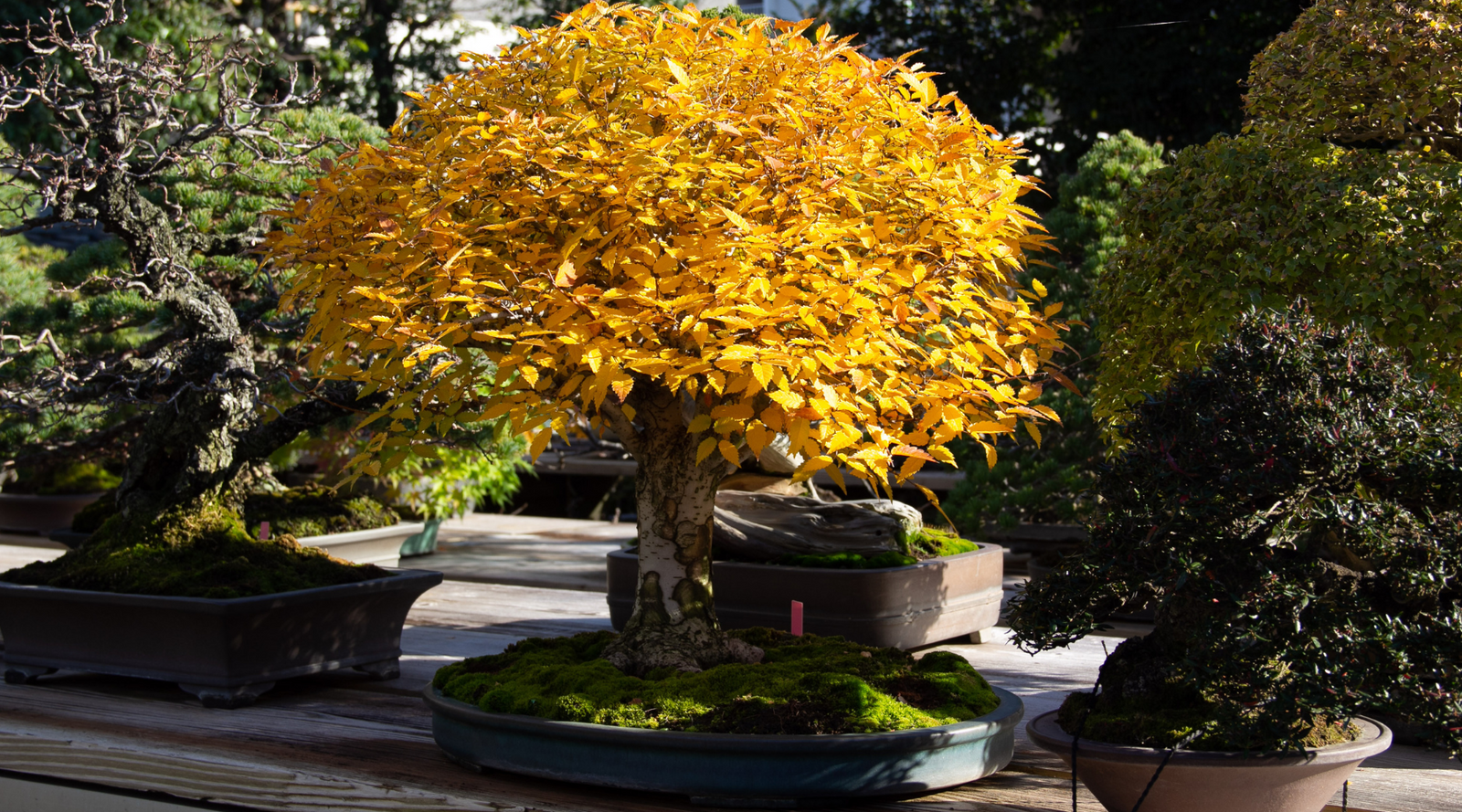
7 min read
As our request for watering tips from bonsai enthusiasts received such a response we decided as Autumn was around the corner that we would ask our followers for their fertilizing tips with an attractive prize as a giveaway. (Be sure to follow us on social media for future contests)
Autumn is an important month during which to fertilize all species of bonsai as it strengthens them increasing their winter hardiness. They will also have built up reserves to grow healthily and strongly in Spring.
Here are 13 tips from bonsai enthusiasts with additional comments from myself.
Tip #1
Foliar feeding (spraying the foliage/leaves) of your bonsai is a great way to keep your bonsai healthy and can also be used as a pick-me-up for sickly trees.
A liquid organic fertilizer is recommended and spraying early evening or late afternoon - when the stomata (pores on leaves) are open. Avoid spraying when it is hot or leaves wilting. Spray both top and bottom of leaves.
Foliar feeding with a fine spray is most certainly a method of providing additional nutrients to bonsai however this is more the case for trees with weak root systems, such as those which were repotted during that growing season. Healthy trees would benefit more from a soil drench.
Tip #2
I'm away from home for extended periods so it can be challenging to fertilize my developing trees sustainably. Therefore, for developing trees that need repotting (into either the ground or large growing containers), I usually mix a handful of pelletized guano into the growing media. This way I know that the trees receive some organic fertilization for a few months at least in addition to when I can actually get around to applying liquid fertilizer.
Personally I would not recommend pelletized fertilizers for bonsai, and even less so to mix it into your growing medium. This form of fertilizer rapidly deteriorates and will clog up the spaces between soil particles thus reducing water and air penetration (percolation). Furthermore, these pellets broadly speaking quickly release their nutrients so after a relatively short time they will be leached from the soil with frequent watering leaving your bonsai with no source of additional nutrients.
I would rather recommend for enthusiasts with the challenge described by the author, to use slow release chemical fertilizers as they are designed to be added to growing media and release a balanced source of NPK to plants.
Tip #3
The best fertilizer I have used so far is Bonsaiboost from Bonsai tree I like to place the teabag in the fertilizer baskets my trees have grown much faster and healthier than ever before.
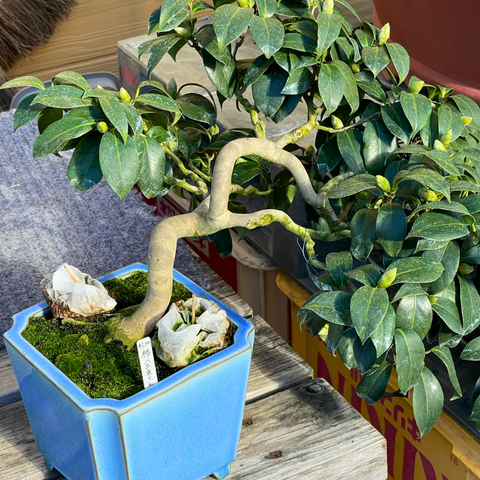
BonsaiBoost can be secured with a toothpick or placed into fertilizer baskets to discourage theft or disturbance.
Customers often give us this feedback and we are most grateful. If you don't like the look of teabags around your trees then placing them inside the fertilizer baskets is a great idea. The basket must make contact with the soil so that the bacteria which breaks down the proteins can reach it. Some customers bury the bags inside the soil, which is fine but if you have any amount of surface roots then this is not going to be possible without removing them, which of course is a bad idea.
Tip #4
Fish dilute is a concentrated fertilizer for your bonsai. It fertilizes a bonsai quickly and effectively. 1. Lightly water before applying fertilizer. 2 Stop fertilizing before fertilizer begins to run out of the drainage holes. 3 Lightly water after applying liquid fertilizer (the reason for this is because the fertilizer can burn the roots of the tree)
Fish based (fish hydrolysates) liquid feeds are great! Chemical fertilizers will be quicker however as the NPK can be more readily absorbed. Watering prior to feeding is a good idea as in my observation the mixture is more uniformly absorbed. If you are using the correct dilution then there should be no burning of the roots. If its an organic feed - almost impossible, with chemical feed it will be easier to burn the roots but just ensure you use a mix which is less or no more concentrated than the package directions. I would not water immediately after feeding, rather wait until the trees need watering again.
Tip #5
Most Bonsai trees should be fertilized during the entire growing season; early spring through mid-fall. Older and more mature trees are often fertilized less frequently, depending on the species, time of year, stage of development, and health of the tree.

White pines are one of those species where you mainly fertilize only in autumn in an effort to control candle and subsequent needle length.
Some good advice there! However the tip is qualified by several conditions:
I have addressed these in great detail in other articles, so in short, you do need to understand the above criteria and how it will affect your fertilizer regime.
Tip #6
In the development of bonsai, fertilizer is very important as your potted tree has limited soil that is drained of nutrients with every water. Be specific when it comes to the requirements of the species you are fertilising and never fertilize a dormant tree ( winter). I use bonsai boost as the nutrient ratios are catered towards vigorous yet compact growth with short internode length that leads to a much better developed bonsai tree.
It is true that due to frequent flushing of the container, nutrients the soil might have contained will be depleted fairly quickly. This is why using soils with a high CEC value is of benefit. In the old days growers used to use compost and other such soils thinking benefit the plant due to the nutrients expected from these mediums. The practice has changed and today it is widely accepted that inorganic soils present far fewer problems of compaction, break down, insects and bacteria and that fertilizer is better applied in an informed and deliberate manner.
Tip #7
The reason for fertilizer is to boost the growth of the plant this helps with healthy growth and nutrients for the bonsai to absorb it is important that the bonsai doesn't get too much fertilizer and it's important that it's well mixed The right amount will always contain nitrogen, phosphorous acid and potash salts that contain potassium in liquid form.
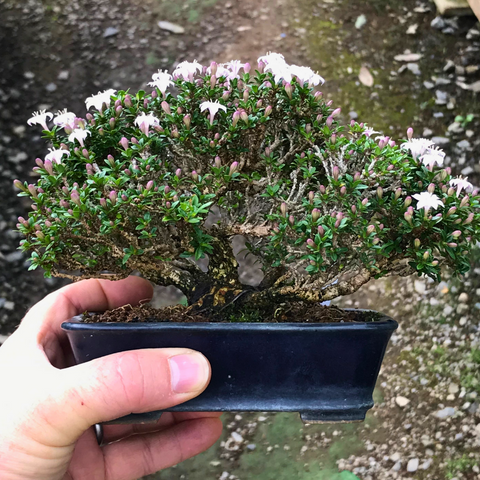
Flowers rapidly deplete the available nutrients and should thus be supplemented.
Plants will actually grow just fine without us giving them fertilizer. Fertilizer simply provides for that extra boost to plants which helps them to respond to the techniques we apply to them and in the case of flowering and fruiting plants fertilizer will enhance this. Of course should there be deficiency in the plant, fertilizers or more accurately trace elements can assist.
It is always important to note what the NPK ratio is of the fertilizer you are using and that it is appropriate for your goals.
Tip #8
You can use a toothpick to pin the bags to the soil so birds can't steal it. Also, I found a liquid fertilizer is really good to mist the leaves every now and then.
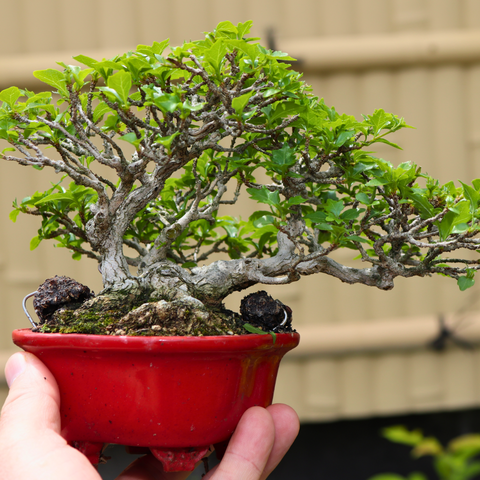
Use a wire root to secure solid organic fertilizer cakes.
Unfortunately as much as your bonsai love organic fertilizer in neat little packages, so do all manner of animals. Rats, dogs and more will steal and eat them. Birds will peck at them or flip them over to get to grubs (harmless to your trees). Putting the bags into fertilizer baskets might help unless the animal simply takes both. Toothpicks can help to prevent birds flipping the bags off your trees. Usually these problems are seasonal, during those times you can revert to chemical granules and/or liquid fertilizer soil drenches on a weakly weekly basis.
Tip #9
Do not forget/neglect to Fertilize your trees in Autumn they will "thank" you in Spring * for doing so!
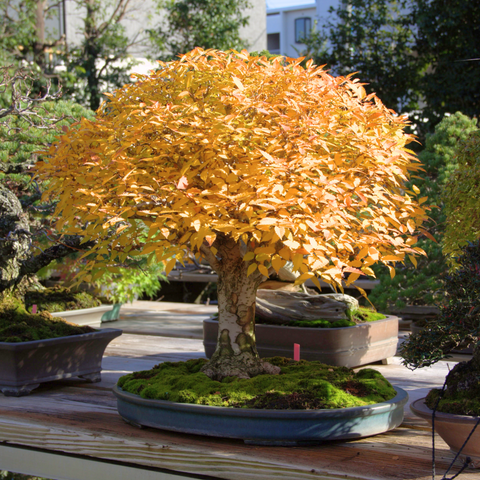
You know its autumn when your deciduous trees change their leaf colour.
I believe Autumn is the most important time to fertilize all your bonsai trees. There is no species I can think of which will not benefit from this treatment at this time of the year.
Tip #10
Making a "tea" with matured goat manure seems to work great since I always have a few goats and by extension, a good fertilizer near by.
This sounds like it could be a good idea for a garden and perhaps even for pot plants. However in my opinion it is not a suitable solution for bonsai cultivation. When we fertilizer we should be doing so with a plan in mind (refer to tip #5). I am not sure if there is an NPK analysis of goat manure tea the same as I am not sure what this is for worm tea - hence I would use neither for my bonsai. To generally keep plants alive and growing strongly I am sure these by products would be ok but as your bonsai mature and develop I doubt the requirements will be satisfied.
Tip #11
Bonsais tend to prefer slow release fertilizers, with a keen liking of solid fertilizers rather than liquid alternatives. Remember the 4 R's of bonsai fertilization: the RIGHT kind, the RIGHT nutrients, the RIGHT time, and finally, the RIGHT amount.
I really like that! The four R's. Very cool and easy to remember. Thank you.
Tip #12
My only tip for fertilizer is read and look up the blog on Terry's webpage on @bonsai_tree_za . He has the most interesting info and valuable advice available out there for all bonsai enthusiasts whether a seasoned pro or beginners. This gentleman has done some great research on the subject. Not everyone is out there to share like Terry does.
Thank you to this contributor! Appreciate the endorsement. The articles being referred to in this tip can be found here.
Tip #13
Adjust your fertilizing regime to your goal for a tree. Think about what type of growth the tree needs and what stage it is at. A massive pot and high N content fertilizer is not going to be appropriate for a fully developed, highly ramified tree in a maintenance / refinement stage. You will have excessively long internodes and coarse growth. That being said, a refined tree does need nutrients to remain healthy. It can just be withheld/reduced for initial spring flush. (Species dependent - learn about what your tree needs!) Monitor leaves on trees: early leaf fall, yellowing, slow growth or weak root system can be due to burning the roots from excessive fertilizing. Fertilizing should be on a schedule during the growing season (and less frequently for tropical and conifer trees during the winter months, don't fertilize dormant deciduous) - assuming your schedule works and you aren't over/under fertilizing. Remember to slow down in the heat of summer! :) Solid fertilizer is a slow release approach that requires less upkeep but risks burning the roots. Liquid fertilizer is more fast acting but is flushed through the soil when watered, so replacement is required more frequently. Finally in autumn, don't stop fertilizing too prematurely. Next spring needs energy to store!
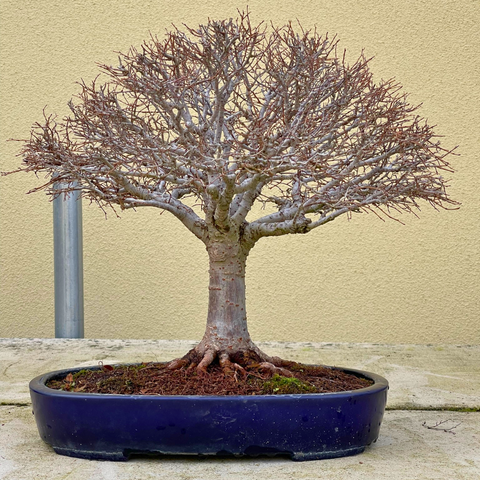
Don't feed your trees during winter dormancy.
Comments will be approved before showing up.

Exclusive Offer: Buy 2 Venus Fly Traps, Get the 3rd One FREE - Limited Time Only!
Add three, six, nine or any other multiple of three of our hungry fly traps to your cart and the discount is automatically applied.
Arthur Webb
April 11, 2023
A well deserved wining entry containing sound advice. Some useful ideas from others, particularly Tip 11 and the four R’s!